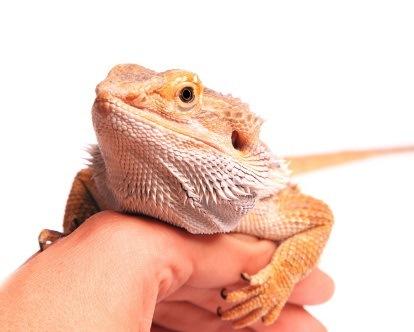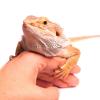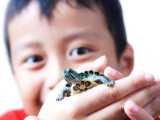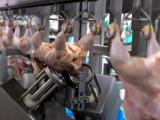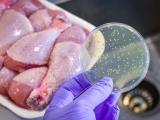The US Centers for Disease Control and Prevention (CDC) said yesterday that it and state partners are investigating a multistate outbreak involving a rare Salmonella strain from handling bearded dragons that since early 2012 has sickened 132 people in 31 states.
Illnesses first came to health officials' attention in January when the Wisconsin Department of Health reported a cluster of 12 Salmonella Cotham infections, most of them in people who had contact with pet bearded dragons. The lizards are popular pets that come in different colors.
Investigators are using PulseNet, a national subtyping network designed to detect infections that may be part of an outbreak, to identify additional illnesses. Most of the affected states are reporting just a few cases so far (see CDC map below), with three states reporting double-digit numbers: California (21), New York (10), and Wisconsin (12).
The CDC said the strain is a rare serotype that has accounted for only 0.01% of human isolates in the United States since 1963. Prior to the outbreak, less than 25 Salmonella Cotham isolates are reported to PulseNet each year.
Though patient ages range from younger than 1 year to 79, children younger than age 5 make up 58% of those sickened in the outbreak. Among 67 patients with available information, 42% were hospitalized, but no deaths have been reported. The latest illness-onset date was Apr 1.
Epidemiologic investigation
After Wisconsin health officials reported the state's cluster to federal health officials and infections emerged in other states through PulseNet, the CDC sent a questionnaire to states to learn more about contact sick patients had with reptiles and food they may have eaten the week before they became ill.
Of 31 surveys the CDC received back, 27 people (87%) reported contact with reptiles or their environments, a dramatically higher percentage than the 5.6% of American households that own reptiles. Also, of the 25 patients who said they had contact with lizards, 21 (84%) specifically reported contact with bearded dragons.
State and local health officials are continuing to interview sick patients.
In another finding implicating bearded dragons, the Oregon Public Health Laboratory isolated the outbreak strain from a bearded dragon and its habitat from the home of one of the state's two outbreak case-patients.
Tests on isolates from three patients through the CDC's National Antimicrobial Resistance Monitoring System (NARMS) found that one was resistant to 10 different antibiotics, including ceftriaxone, a drug commonly used to treat serious Salmonella infections.
Efforts to pinpoint source
Trace-back investigations are under way to pinpoint the source of the bearded dragons linked to the outbreak, the CDC said. Several breeders supplied the lizards to pet stores where case-patients had bought their pets.
The CDC reminded reptile owners to thoroughly wash their hands with soap and water after handling the pets or anything in the animals' environments.
Several Salmonella outbreaks in the past have been linked to contact with pet reptiles or amphibians. An outbreak in 2012 and 2013 involving three different strains was connected to small turtles, which sickened 473 people in 43 states. In 2011, health officials linked African dwarf frogs infected with Salmonella Typhimurium to 241 illnesses in 42 states.
See also:
Apr 23 CDC outbreak announcement
CDC map: Persons infected with the outbreak strain of Salmonella Cotham, by State*
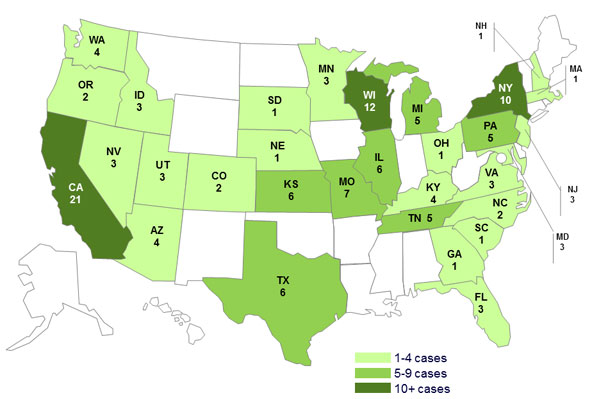
*n=132 for whom information was reported as of Apr 21, 2014
